Final Parity Rule Fulfills Major NABH Requests
NABH is pleased the U.S. Health and Human Services (HHS), Labor (DOL) and Treasury Departments addressed our major concerns in the final parity rule the three federal agencies released Sept. 9.
The long-awaited regulation implements more stringent compliance protocols and related definitions (noted below) with the goal to implement and enforce the Mental Health Parity and Addiction Equity Act more fully and fairly almost 16 years after it was enacted into law in October 2008.
NABH and our partners will continue to examine the dense, legalistic rule to assess the real-world effects of the new changes and determine our next advocacy steps related to parity. The rule affects group health plans and group or individual health insurance coverage that cover both behavioral and physical health services. Two main provisions in the rule include:
- Requiring health plans to prepare comparative analyses that assess parity compliance of their non-quantitative treatment limitation (NQTL), including specifying the mandatory components of these analyses and the process for publicly sharing these reports; and
- Amending the sunset provision to prevent opting out of compliance with MHPAEA, as required by law, after Dec. 29, 2022, with a June 27, 2023 deadline for certain plans that are subject to collective bargaining.
Key NQTL Provisions
NQTLs include prior authorization requirements and other medical management techniques, standards related to network composition, and methodologies to determine out-of-network reimbursement rates. The rule addresses these NQTL issues by:
- Reinforcing that health plans and issuers cannot use NQTLs that are more restrictive than those predominantly applied to physical health benefits in the same classification.
- Disallowing implementation of new NQTLs that do not meet parity standards.
- Specifying how insurers are to measure and report on their network composition, out-of-network reimbursement rates, and medical management and prior authorization NQTLs.
- Concerning the design of NQTLs, prohibiting discriminatory information, evidence, sources, or standards that systematically disfavor access to behavioral healthcare benefits as compared with physical health benefits.
Fraud, Waste and Abuse
A particularly important win for NABH is the rule’s addition of “fraud, waste, and abuse” standards as a distinct NQTL that is subject to a parity test. Unfortunately, today some health plans exploit providers by using unwarranted fraud, waste, and abuse audits of providers who have no history or evidence of fraud or abuse. For this reason, we strongly urged regulators to implement this new NQTL to provide structure and transparency in these audits.
Generally Accepted Standards of Care (GASC)
Another gain is the rule’s requirement that health plans explain any medical necessity standards that diverge from GASC. While the parity law does not require that medical necessity guidelines align with GASC, this new requirement will bring meaningful transparency and accountability to the process of creating such guidelines.
“Substantially All” Benefits Determination
When determining the limits of a mental health or substance use disorder benefit, the parity test to compare the coverage with relevant physical health benefits should be applied to substantially all medical/surgical benefits in that classification.The rule included this approach, rather than the proposed mathematical test for “substantially all” to implement a less cumbersome option.
“Meaningful Benefits” Definition
To meet the mandatory “meaningful benefits” test, mental health and substance use disorder benefits will be compared with all benefits provided for physical health coverage in the same classification. For this provision, HHS, DOL, and Treasury accommodated our request for this definition to mitigate future coverage disagreements among stakeholders, including plans, providers, auditors, and the courts.
For more details, please see the federal agencies’ joint fact sheet and news release. And please look for additional information in CEO Update this Friday, Sept. 13.

